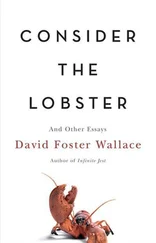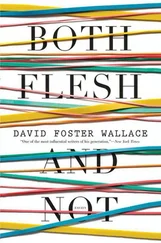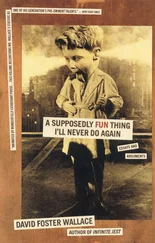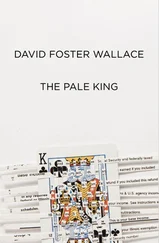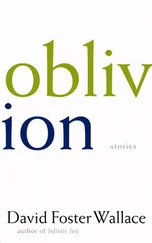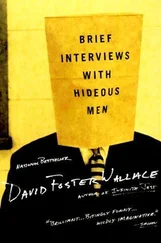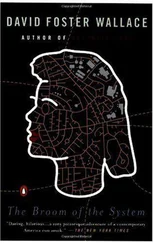David Wallace - Girl With Curious Hair
Здесь есть возможность читать онлайн «David Wallace - Girl With Curious Hair» весь текст электронной книги совершенно бесплатно (целиком полную версию без сокращений). В некоторых случаях можно слушать аудио, скачать через торрент в формате fb2 и присутствует краткое содержание. Год выпуска: 1996, Издательство: W. W. Norton & Company, Жанр: Современная проза, на английском языке. Описание произведения, (предисловие) а так же отзывы посетителей доступны на портале библиотеки ЛибКат.
- Название:Girl With Curious Hair
- Автор:
- Издательство:W. W. Norton & Company
- Жанр:
- Год:1996
- ISBN:нет данных
- Рейтинг книги:4 / 5. Голосов: 1
-
Избранное:Добавить в избранное
- Отзывы:
-
Ваша оценка:
- 80
- 1
- 2
- 3
- 4
- 5
Girl With Curious Hair: краткое содержание, описание и аннотация
Предлагаем к чтению аннотацию, описание, краткое содержание или предисловие (зависит от того, что написал сам автор книги «Girl With Curious Hair»). Если вы не нашли необходимую информацию о книге — напишите в комментариях, мы постараемся отыскать её.
). Girl with Curious Hair
Girl With Curious Hair — читать онлайн бесплатно полную книгу (весь текст) целиком
Ниже представлен текст книги, разбитый по страницам. Система сохранения места последней прочитанной страницы, позволяет с удобством читать онлайн бесплатно книгу «Girl With Curious Hair», без необходимости каждый раз заново искать на чём Вы остановились. Поставьте закладку, и сможете в любой момент перейти на страницу, на которой закончили чтение.
Интервал:
Закладка:
Her vow, plus strength of character, yielded certain implications. Her slightly dented touring car stayed right where it had stalled, and the woman lived in it. Pretty big car. Farmer Kroc's family, across the field, was rather honked off, at first, about the collision and death and disappearance (utter) of their breadwinner's body; but the woman, out of guilt, paid them more than the farmer himself would have brought in in a lifetime; and not only was there no litigation, but the woman became almost an extended Kroc-family member, from her home in the motionless car. Various farm kids, at first out of minimal bare human charity, brought her food and basic essentials, appearing from the walls of corn as out of nowhere with the things she needed to live.
And but in return, plus out of gratitude and guilt, she reimbursed them, for these essentials. In fact she paid anybody who brought her anything she wanted. Inevitably, given the way the world wags, a kind of market was quickly established: here was this urban person in this big car at an intersection equidistantly central to rurally Depressed Champaign, Rantoul, and Urbana, who wanted things, and would exchange money for the things. The area was substantially transfigured. Misery, guilt and charity became prosperity, redemption, market. Itinerant Depressed poor, but with things, and entrepreneurial drive, flocked to the intersection where her tractor-smacked car sat inert, she inside. The redeemed poor built lean-to's, which became perma-tents, which became shanties, thence a kind of nouveaux-bourgeois Rooseveltville, clustered around the site of the collision.
A handsome scimitar-nosed itinerant peddler, bicycling through from back East, where things were just not in good shape at all, bearing East-Coast flora he'd purloined from the lavish funeral of a recently suicided banker, was the one who got in on the ground floor, so to speak. He saw the woman, in the car, and in that kind of ingenious marketing epiphany from which American legend grows, insisted on selling the woman his very top-of-the-line tea-rose bulb. At cost. The bulb was planted in the world's second-richest soil and in no time at all begat a bush. The bush begat countless other bushes, through fertilization, and an irruption of Valentine red began to impose its beauty on the green utterness of the farmerless field's own beauty.
In a parallel development, the destitute itinerant peddler and the wealthy inert woman fell in love with each other, in the big car, eventually begat a child, and then moved out of the car (a car being no place for a child) into a sprawling farmhouse the peddler designed and the woman underwrote, a house from which they never budged again, sustained by those in the surrounding shanties whose origin and reason was sustaining the guilty wealthy woman. The irruption of rose bushes became an actual tea-rose farm, a central dot of red on the state's black-and-green, camouflaged face, and Jack and Mrs. Jack Steelritter raised their well-fed children on the sheltered intersection Jack had discovered between beauty, desire, and discount.
Across the cornfield-turned-rose-farm, the Ray Kroc, Sr., farm family, minus a patriarch, but plus a settlement way beyond legal, and with a son who, once out from under his hard-working father's shadow, discovered he had vision, began to engineer a rotation, shifting the emphasis of their labor and capital in the direction of cattle, potatoes, and sugar. And it became good.
For whom is the Funhouse a house? Maybe for liars, creative types, campaigners, tree surgeons having at the great Saxonic tree. For Tom Sternberg, the Funhouse is less a place of fear and confusion than (grimace) an idea, an ever-distant telos his arrival at which will represent the revelated transformation of a present we stomach by looking beyond. A present comprised by fear of confusion.
OK true, Funhouse 1, like all the foreseen and planned national chain of Funhouse franchises, is, in reality, just a discotheque. A watering hole and meat market and gathering place where the spotlights tell us where and how to swing to the beat. One big enclosed anarchic revel — a Party: where we, via Party rule, gather and pretend with grim Puritan fortitude that we're having just way more fun than anybody could really be having.
OK now but the Funhouse also represents, to Sternberg — as hero, as Protagoras — the Funhouse represents the future. As of right now, the prediction here is that Sternberg will arrive, through the inexorable internal logic of his choice and circumstance, at Collision's Funhouse, as a tagged and registered part of the foretold and long-awaited Reunion of Everyone Who's Ever Represented the Product in a McDonald's Commercial; will unite and interact with the crowd of actors there; will have numerous insights, revelations and epiphanies; and will, ultimately, at the end of the time, confront his future. An implication will be that Sternberg, as an emblem — or synecdochical appendage — of his generation, will countenance, in his future, The Future.
All this is being made explicit both to avoid any possible appearance of Symbolist/New Realist coyness, and also because the true tension of any record of Reunion day just doesn't rely on this stuff, and so hopefully isn't compromised or tranquilized by being made, as Dr. Ambrose told the workshop just before Memorial Day, "desuppressed, anti-replenished, exhausted, in full view."
He'd tell us yes friends and neighborhood association the textual tension and payoff here lies in the exact sort of late-twentieth-century Future this introverted aspiring product-representative will confront. Ambrose explained — and it's all in Mark Nechtr's notes, in a precise crabbed hand — Ambrose held that there are numerous types of potential futures flapping and honking in man's conceptual pond. Specifically that there's differences between the trinity of: a future within time (history & prophecy); a future beyond time (resurrection & eternity); and a future that ends time (eschaton & apocalypse). Which did we find most attractive? he'd asked rhetorically, finally wiping the nastily critical poem off his green blackboard.
Three other things Dr. Ambrose told the workshop (that Mark Nechtr doesn't have in his tiny crabbed notes because his attention had strayed to the loveless pathos of the postmodern Drew-Lynn Eberhardt and the thing she'd scrawled before blowing off class):
"The subject of a story is what it's about; the object of a story is where it's going";
"Do not confuse sympathy for the subject and empathy with it— one of the two is bad."
"Yes, he, Ambrose, the author, is a character in and the object of the seminal Lost in the Funhouse; but he is not the main character, the hero or subject, since fictionists who tell the truth aren't able to use real names."
Since and as J.D. and DeHaven Steelritter are still arguing about whether it's more efficient to shut off DeHaven's growling car, out there in the pay lot, and since no one connected to today is in sight in the terminal or rest room (Mark went in and checked for collegiate cuffs and footwear under the stall doors) to guide them, still, the trio of Mark and D.L. and Sternberg are to be seen making their way toward the arrowed signs for Ground Transportation, their object being to rent a Datsun, Mark carrying both his light bag and D.L.'s bag, a stabbing sensation in his thorax which full hands prevent him from verifying as his special Dexter target arrow, which he's attached to, and hid from the LordAloft 7:10 pilot in his shirt, and is still carrying there, D.L. walking with arms crossed over a lime-green-jacket-enclosed chest whose dimensions remain, to Sternberg, disappointingly vague, her pelvis preceding her by at least a couple steps. Sternberg is lugging the bag his parents bought him, casting his castable eye this way and that for anyone with a gold parabolic nametag, an expectant expression, a clown's face— eye casting over a Semitically modest set of cheekbones but a rather snoutish Gentilic nose, a full if somewhat ill-defined mouth, his face itself unfortunately one big chaos of poison-sumac cysts, infections and scars, dimpled as a metal roof post-hailstorm; and of course a pleasant blue forward-looking eye and an unnatural dead-white backward-looking eye. Ironically, a good part of his anticor-poreal stance (it was his idea to call having a body Corporeal Punishment) derives from his non fatal flaw, the skin trouble, the skin trouble itself deriving from a weekend years past, just before a cattle call for a Wisk spot he didn't get, a weekend of solo camping and getting-into-collar-soiled-character, alone, with a tent, in the Berkshires, West of Boston, during which he'd contracted a mild spatter of poison sumac, and had purchased a discount generic brand of poison-sumac medicine he curses now and forever (like most terse-labeled generics the product was untrustworthy, turned out in fact to be medicine for the sumac, not the sufferer therefrom, but if the label says MEDICINE FOR POISON SUMAC what the fuck are you going to think, standing there?) that had set his face, neck, chest and back aflame: pulsing, cystic, volcanic, allergic, clotted, almost sacredly scarred. The sumac is so bad it hurts — which of course is a constant reminder that it's there, on his body — and it won't go away, no sooner healed by brand-name antitoxin than reinfected. The whole thing's just pretty loathsome, and you can bet Sternberg loathes it. He's unhappy, but in that comparatively neat and easy way of those who are at least pretty sure they know why they're unhappy, and what to curse, now and forever.
Читать дальшеИнтервал:
Закладка:
Похожие книги на «Girl With Curious Hair»
Представляем Вашему вниманию похожие книги на «Girl With Curious Hair» списком для выбора. Мы отобрали схожую по названию и смыслу литературу в надежде предоставить читателям больше вариантов отыскать новые, интересные, ещё непрочитанные произведения.
Обсуждение, отзывы о книге «Girl With Curious Hair» и просто собственные мнения читателей. Оставьте ваши комментарии, напишите, что Вы думаете о произведении, его смысле или главных героях. Укажите что конкретно понравилось, а что нет, и почему Вы так считаете.

